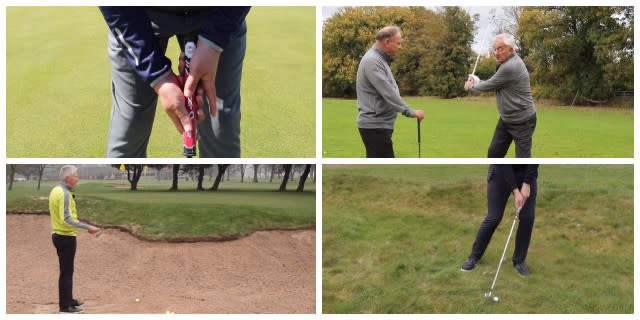10 Golden Rules of Golf
The original Rules of Golf, issued by the Honourable Company of Edinburgh Golfers in 1744, numbered just 13. Today’s Rules of Golf has 34 Rules with over 200 sections and subsections, totaling more than 20,000 words. It is no wonder that most golfers never bother to read the Rules book and those that do often disagree over their interpretation.
In 1982, as a result of collaboration between the USGA and GOLF Magazine, George Peper was tasked to write a simplified summary of those Rules that affect most golfers, most often. More recently LINKS magazine took up the cause and partnered with the USGA to promote the original version with a few minor amendments.
If all golfers were to learn these 10 Golden Rules, George Peper estimates that they would be able to resolve 90% of the Rules situations that golfers routinely encounter in the course of an 18-hole round. I present them here to remind readers of some of the most basic principles of the game we love;
The 10 Golden Rules of Golf
- Play the ball as it lies.
- Don’t move, bend, or break anything growing or fixed, except in fairly taking your stance or swing. Don’t press anything down.
- You may lift natural objects not fixed or growing, except in a water hazard or bunker. No penalty.
- Movable man-made objects may be moved. For immovable objects, you may take relief by dropping away from them within one club-length of the nearest point of relief, no nearer the hole, except in a water hazard or if the object defines out of bounds. In a bunker, you must drop in the bunker. No penalty.
- You may take relief from casual water, ground under repair, burrowing animal holes or casts, anywhere except in a water hazard. On the putting green, place at the nearest point of relief, no nearer the hole; otherwise drop within one club-length of the nearest point of relief, no nearer the hole. In a bunker, you must drop in the bunker. No penalty.
- In a water hazard or bunker, don’t touch the water or ground with your hand or club before the stroke.
- If you hit your ball into a water hazard and cannot find or play it, either drop behind the point where the ball last crossed the hazard margin or at the place where you played the shot. On the tee, you may tee the ball. One penalty stroke. If you hit into a lateral hazard, you may also drop within two club-lengths of the point where the ball last crossed the hazard margin, or, within two club-lengths of a point equidistant from the hole on the opposite margin. One penalty stroke.
- When you hit your ball out of bounds or cannot find it after 5 minutes of searching, add a penalty stroke, go back and drop a ball at the place where you played the shot. On the tee, you may tee the ball. If you think you have hit your ball out of bounds or lost it outside a water hazard, play a provisional ball before searching for the first one.
- When you have an unplayable lie, you may drop a ball at the place where you played the previous shot, adding a penalty stroke. On the tee, you may tee the ball. Alternatively, drop within two club-lengths, no nearer the hole, or any distance behind the unplayable spot, keeping it between you and the hole. If the ball is in a bunker, you must drop in the bunker, under either of the alternative options. If you can’t play your ball that is in a water hazard, see Golden Rule #7.
- You may repair ball marks and old hole plugs on the putting green that are on the line of your putt, but not spike marks.
If I were asked to include one more Golden Rule principle to this list it would be, never touch a ball in play without marking it first. Whilst there are occasions when you do not have to mark a ball in play (e.g. when you have deemed your ball unplayable and are taking relief under penalty of one stroke) it is wise to do so and you will not have to remember when you have to mark it and when you do not.
Good golfing,
Related Content:
Article from Barry Rhodes author of the book, ‘999 Questions on the Rules of Golf 2016’
Barry is author of the book, ‘999 More Questions on the Rules of Golf 2016’ and writes a regular blog of miscellaneous content on the rules of Golf at www.barryrhodes.com
Related Video
Comments
Barry Rhodes
Barry is author of the book, '999 Updated Questions on the Rules of Golf 2012 - 2015' and writes a regular blog of miscellaneous content on the rules of Golf at www.barryrhodes.com
Latest Articles




















